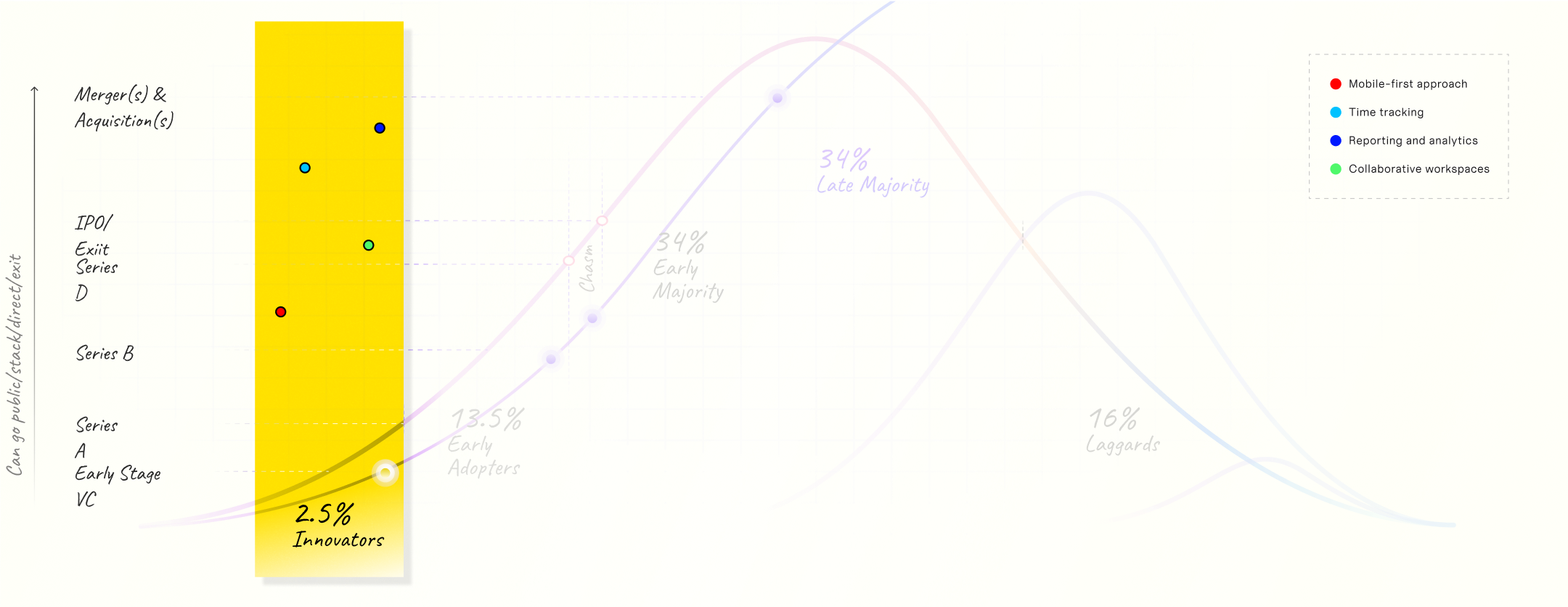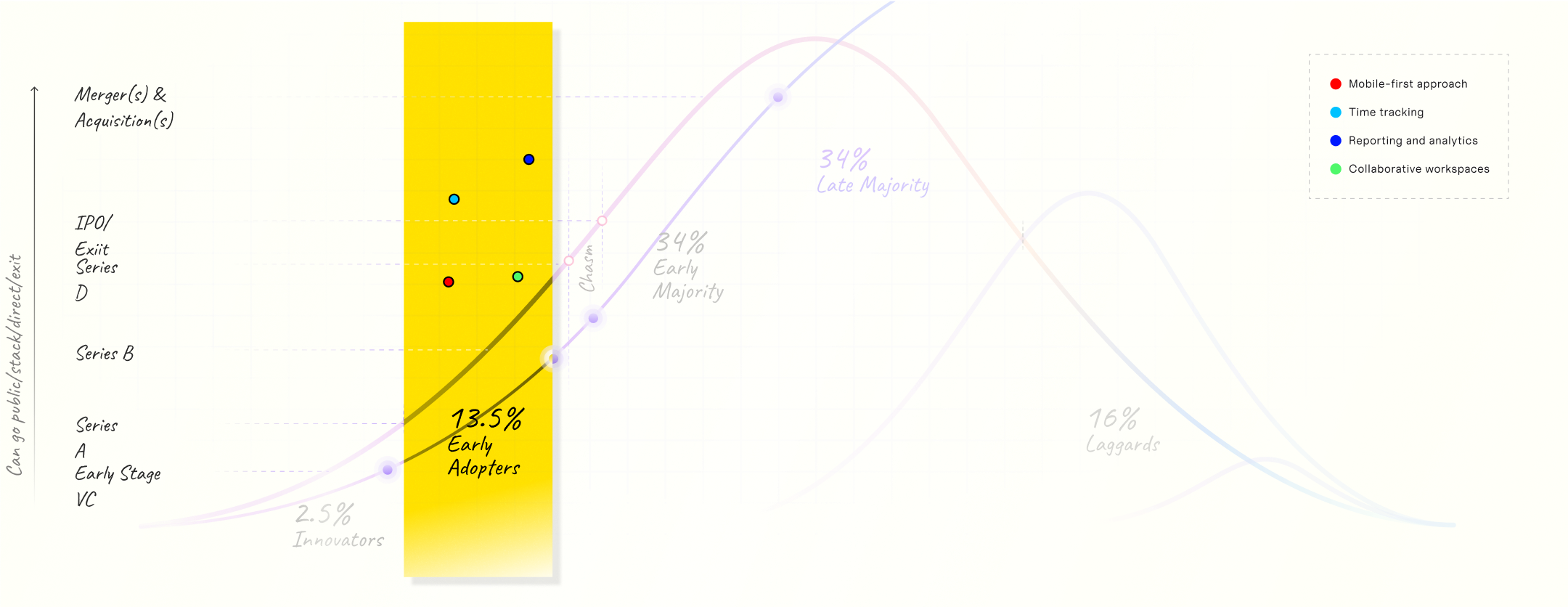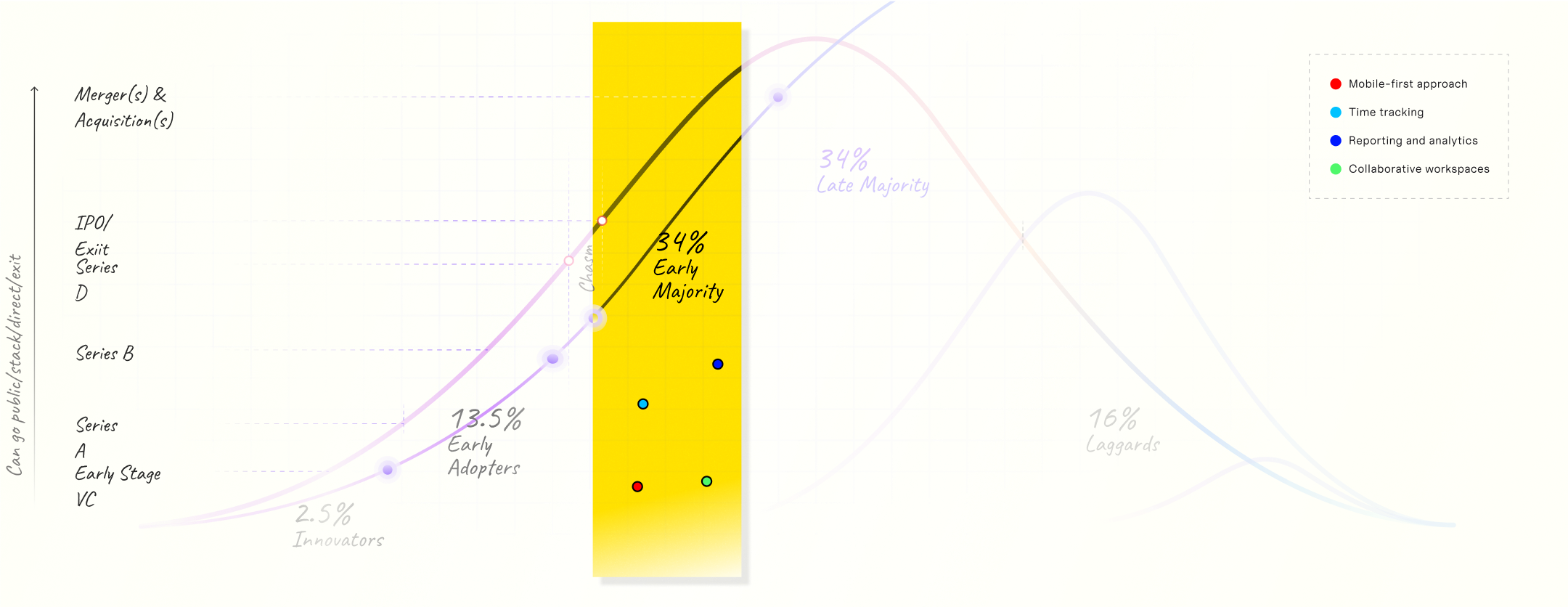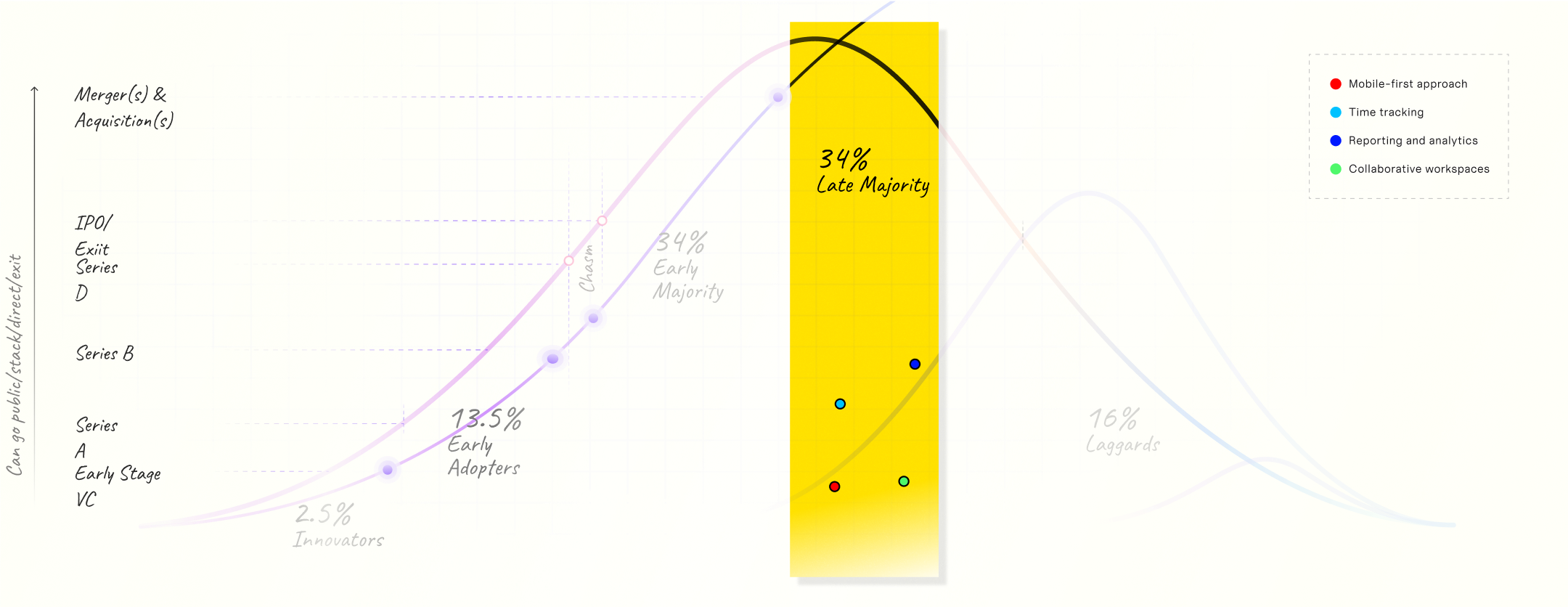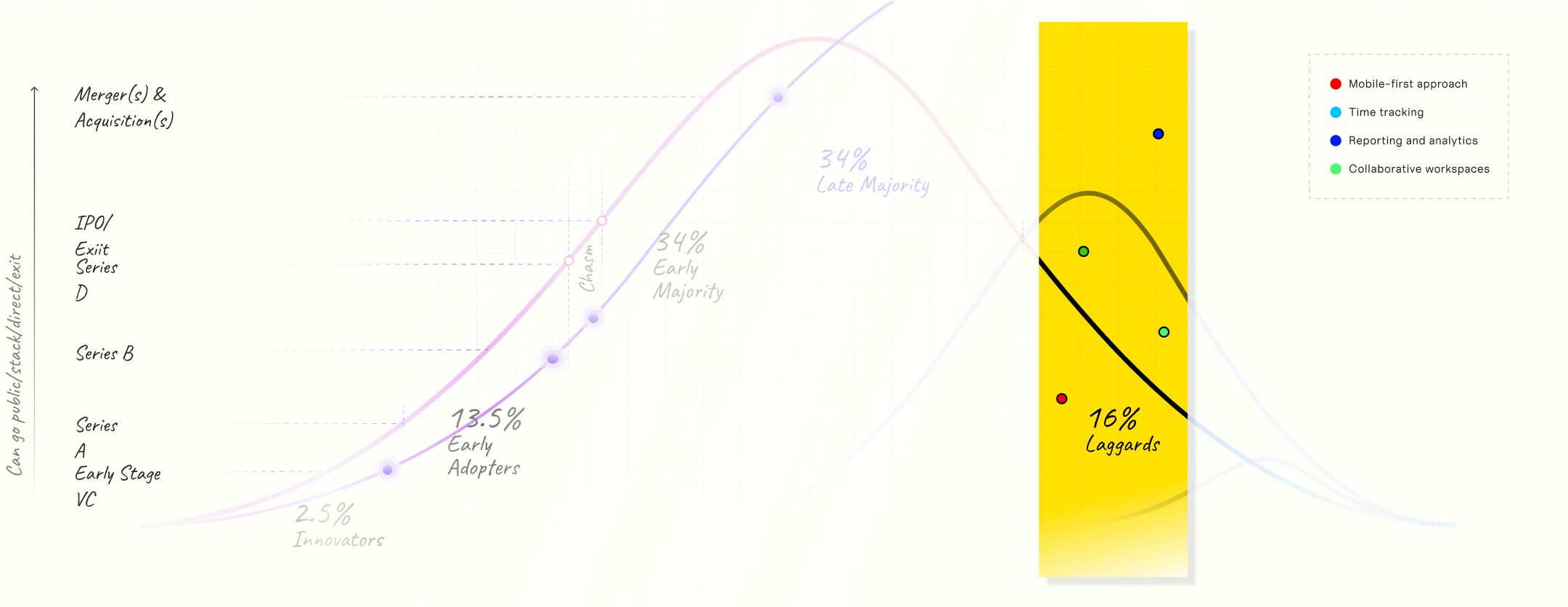

Basecamp is a project management and team collaboration software company founded in 1999. It provides a web-based platform that helps individuals and teams to manage projects, communicate, and collaborate effectively.
The company’s products are designed to streamline workflows, reduce email overload, and increase productivity. Basecamp’s offerings include a variety of tools and features such as to-do lists, calendars, file sharing, and team messaging.


Problems Basecamp trying to solve :
Basecamp aims to solve a number of problems that teams and individuals face when managing projects and collaborating with others. Some of the main problems it addresses include:
- Fragmented Workflow
- Overwhelming email inboxes
- Poor Communication
- Overcomplicated Project Management Tools
- Lack of Collaboration
- Lack of Customisation
- Lack of Transparency
- Inefficient Task Management
Basecamp’s vision is to make work better for people. The company believes that work should be simple, focused, and stress-free, and that technology should help, not hinder, this goal.
- To revolutionise the way teams work together
- To be the go-to solution for project management and team communication
- To have a positive impact on the world by improving work and productivity for teams everywhere.
Basecamp helps in providing following values in the clients through their design and marketing strategies and solutions:
- All-in-one solution
- Simplified Project Management
- User-friendly Interface
- Increased Productivity
- Increased Security
- Reduced Stress
- Better Team Communication
Basecamp provides a comprehensive solution for project management and team communication. The following are the features and services that help teams stay organized, productive, and efficient.
- Task and To-Do List Management
- File and Document Management
- Group Discussion and Commenting
- Group Calendar and Scheduling
- Automated Check-ins and Progress Reports
- Time tracking
- Client Presentations
- Private Workspaces for Sensitive Projects
A project management platform will have to aligns itself with a set of values regarding what they can support and what they cannot. We cracked a set of values Basecamp might have aligned themselves with, which includes:
- Foster clear communication: Ensure that all project stakeholders have access to up-to-date information and are able to communicate effectively. Basecamp provides features such as message boards, calendars, and file sharing to help teams communicate and collaborate.
- Implement robust project planning and organisation: Ensure that projects are well-planned, organized, and managed from start to finish. Basecamp offers to-do lists, project templates, and project management tools to help teams stay on track.
- Prioritise transparency and accountability: Ensure that team members are accountable for their work, and that progress is transparent to all stakeholders. Basecamp’s progress tracking and reporting features provide a clear view of what has been done and what still needs to be done.
- Overcomplicate processes: Avoid creating unnecessary complexity in project management processes that can lead to confusion and inefficiency. Basecamp aims to keep project management simple and straightforward.
- Neglect collaboration: Avoid neglecting the importance of teamwork and collaboration in project management. Basecamp is designed to help teams work together effectively.
- Ignore feedback: Avoid ignoring feedback from team members and stakeholders, as it can lead to dissatisfaction and a lack of buy-in. Basecamp includes features that make it easy for team members to provide feedback and track progress.
- Social Identity: Basecamp may have used social identity theory, which suggests that people identify with and are influenced by social groups, to create a sense of community and belonging among its users. The company might have encouraged users to identify as part of the Basecamp community through branding, messaging, and other marketing initiatives, fostering a sense of identity and attachment to the product.
- Cognitive Dissonance Theory: Basecamp may have leveraged cognitive dissonance theory, which suggests that people experience psychological discomfort when their actions are inconsistent with their beliefs or values, to encourage customer engagement and usage. For example, the company might have designed its product or marketing materials to highlight the benefits of using its product and the costs of not using it, creating a sense of dissonance and motivating customers to use the product.
- Self-Determination: Basecamp may have used self-determination theory, which suggests that people are motivated by three basic psychological needs: autonomy, competence, and relatedness, to create a sense of purpose and motivation among its users. The company might have designed its product or marketing materials to emphasize how its product satisfies these needs and fosters a sense of autonomy, competence, and relatedness among users.
- Agile Design Model: Basecamp uses an Agile design process, where requirements and solutions are developed through the collaborative effort of cross-functional teams.
- Customer Development Model: Basecamp uses customer feedback and analytics to continuously improve its products and services, making it more relevant to its users.
Our research results show that Basecamp’s features such as the personalized dashboard, integration with calendars, user feedback system, user-friendly interface, and project templates have helped attract a large group of users to the platform. The customizable dashboard allows users to tailor the interface to their specific needs and preferences, making the platform easier to use and navigate. The integration with calendars such as Google Calendar, iCal, and Outlook allows users to seamlessly manage their tasks, events, and appointments. The user feedback system provides an avenue for users to share their opinions, experiences, and suggestions with the development team, helping to improve the platform and its features. The user-friendly interface is designed to be simple and intuitive, making it easy for users to get started and be productive right away. This has helped to attract users who are looking for a project management tool that is easy to use and requires minimal training. The project templates offered by Basecamp reduce the time and effort required to set up a new project and has helped attract users who are looking for a streamlined and efficient project management solution.
Basecamp is a company that uses A/B testing to constantly improve their service.
One example of A/B testing done by Basecamp was in their onboarding process. They ran a test to compare the success rate of users who completed their onboarding process. The results showed that users who interacted with the A version of the onboarding process were more likely to complete it than users who used the B version. This allowed them to make changes to the B version and optimize it for a better user experience.
Another example of A/B testing by Basecamp is in the design of their homepage. They tested two different versions of the homepage to measure which one was more effective at converting visitors into paying customers. The results showed that the A version was more successful, so the company went ahead and implemented the A version as the new homepage design.
By using A/B testing, Basecamp is able to make informed decisions about their design choices and create a better user experience.
For fostering clear communication, Basecamp could perform A/B tests on various aspects of their platform, such as email notifications, project management tools, or team communication tools. By comparing the effectiveness of different versions of these tools, Basecamp could use the results of the A/B tests to improve the user experience and promote clear communication among its users.
For project planning and organization, Basecamp could perform A/B tests on various features of their platform, such as task management, calendars, or to-do lists. By comparing the effectiveness of different versions of these tools, Basecamp could use the results of the A/B tests to improve the user experience and help its users better plan and organize their projects.
For Prioritise transparency and accountability, Basecamp could perform an A/B test on different ways to display project progress and task completion, such as using a bar graph versus a pie chart, or using color coding to indicate task status. They could then evaluate which approach leads to a better understanding of project progress and better accountability among team members.Another example of an A/B test in this context might be comparing different approaches to team communication, such as email versus in-app messaging, to determine the best method for fostering transparency and accountability.

